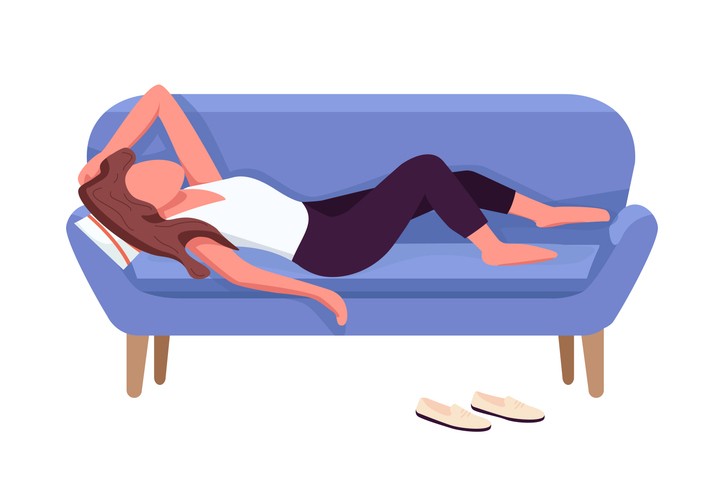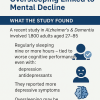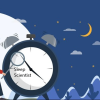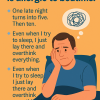The Optimal Nap for Creativity 💡
That mysterious threshold between wakefulness and sleep? Scientists have uncovered it's not merely the entrance to slumber—it's a luminous portal where your mind, freed from logic's constraints, weaves impossible connections and births revolutionary ideas before they've even had a chance to be doubted.
The Creative Power of Napping: The Science Between Dreams and Wakefulness
Thomas Edison, one of history's most prolific inventors, had a peculiar habit. When struggling with a complex problem, he would sit in his armchair holding steel balls. As he drifted off to sleep, the balls would drop, clattering into metal pans placed on the floor—jolting him awake. Surrealist painter Salvador Dalí developed a remarkably similar technique, dozing off with a heavy key in hand that would fall with a crash as he slipped into slumber.
These weren't merely eccentric behaviors of genius minds. Both innovators had independently discovered a powerful gateway to creativity: the hypnagogic state, or what sleep scientists now call N1 sleep—the twilight zone between wakefulness and sleep where the conscious and unconscious mind briefly intermingle.
The Science of Sleep and Creativity
Modern neuroscience has begun unraveling what Edison and Dalí intuited: different phases of sleep influence creative thinking in distinct and powerful ways. Sleep architecture consists of several stages, each with unique effects on our creative capabilities:
N1 (Hypnagogia): The Creative Sweet Spot
The brief transitional period between wakefulness and sleep—typically lasting just 1-7 minutes—represents a neurological goldmine for creativity. During this fleeting state:
✔ Flexible Associations – The brain forms unusual connections between seemingly unrelated concepts, the very essence of creative insight.
✔ Reduced Cognitive Control – Without the analytical mind's strict gatekeeping, unconventional ideas flow more freely.
✔ Hallucinatory Imagery – Vivid, dreamlike images emerge that can serve as direct creative inspiration.
🧪 Recent research confirms what Edison and Dalí experienced. A 2023 study found that participants briefly entering N1 sleep tripled their chances of solving difficult creative problems. Even more remarkably, just 15 seconds in this state significantly enhanced creative thinking.
Beyond Hypnagogia: Other Sleep Stages and Creativity
While N1 receives the most attention for immediate creative insights, other sleep phases contribute to creativity in complementary ways:
🔹 N2 (Light Sleep) – Characterized by sleep spindles (bursts of neural activity), this stage plays a crucial role in memory consolidation and knowledge integration.
🔹 N3 (Deep Sleep) – Primarily associated with physical restoration, but it also helps consolidate learning that may later inform creative work.
🔹 REM (Rapid Eye Movement) – The vivid dreaming state offers another rich creative resource, facilitating emotional processing and complex associative thinking.
The Optimal Nap for Creativity
Different nap strategies target specific sleep stages for enhanced creativity:
The Edison/Dalí Method (1-5 minutes) – Catching just the hypnagogic state by waking at the moment of falling asleep. Ideal for immediate creative insights and breakthrough thinking.
Power Naps (10-20 minutes) – Primarily capturing N1 and early N2 sleep. These brief rests provide cognitive refreshment with minimal grogginess, supporting sustained creative work.
Full Cycle Naps (90 minutes) – Includes all sleep stages, including REM. Best for creative projects requiring emotional depth and complex narrative thinking.
Practical Applications: Harnessing Sleep for Creativity
1. The Classic Edison Method – Sit comfortably holding something that makes noise when dropped. As you drift into N1 sleep, it falls, waking you during this creative sweet spot.
2. Dream Incubation – Before sleep, focus intently on a specific problem or creative challenge. Research shows that directing attention before sleep increases the likelihood of relevant insights during hypnagogia or dreams.
3. Mindful Transition Practice – Upon waking—whether from a nap or full night's sleep—remain still with eyes closed, allowing yourself to retain and explore any imagery or thoughts from your sleep state before they evaporate.
4. Dream Journaling – Keep a notebook beside your bed to immediately record impressions from hypnagogic imagery or dreams, preserving insights that typically fade within seconds of waking.
5. Structured Nap Schedules – Experiment with different nap durations to identify which sleep stages most benefit your specific creative challenges.
Famous Creators Who Used Naps for Creativity
Inventors & Scientists
✔ Albert Einstein – Regularly took brief naps during the day, believing they enhanced creative problem-solving.
✔ Nikola Tesla – Practiced polyphasic sleeping, taking short naps throughout the day.
✔ Leonardo da Vinci – Reportedly followed a polyphasic sleep schedule, claiming it boosted creativity and productivity.
Writers & Artists
✔ Salvador Dalí – Used the key-and-plate method to awaken himself during hypnagogic states, capturing surreal dream imagery in his paintings.
✔ Charles Dickens – Took short naps to improve creativity and productivity.
✔ Mary Shelley – Dream-like imagery during a nap inspired the creation of Frankenstein.
✔ Stephen King – Acknowledges the influence of naps, dreams, and sleep-inspired ideas on his storytelling.
Innovators & Entrepreneurs
✔ Thomas Edison – Used naps strategically, claiming they helped him break creative blocks.
✔ Winston Churchill – Took daily naps, crediting them for mental clarity and creativity.
✔ Arianna Huffington – Advocates for brief sleep breaks to enhance creativity and decision-making.
Why Do Creative Minds Often Use Naps?
Brief naps (especially N1 or REM sleep) allow the mind to forge novel connections, free from waking constraints.
The transition into and out of sleep states provides access to vivid imagery and relaxed cognition, inspiring innovation and artistic creativity.
Practical Takeaway
If you're looking to enhance your own creative process, experiment with strategic naps (particularly brief naps of 10–20 minutes) or Edison-like techniques to access powerful creative insights and innovation potential.
The Untapped Creative Resource
The boundary between wakefulness and sleep represents one of our most underutilized creative resources. Instead of viewing sleep and creativity as competing, we should recognize them as partners—each enhancing the other in a cycle of rest and inspiration.







